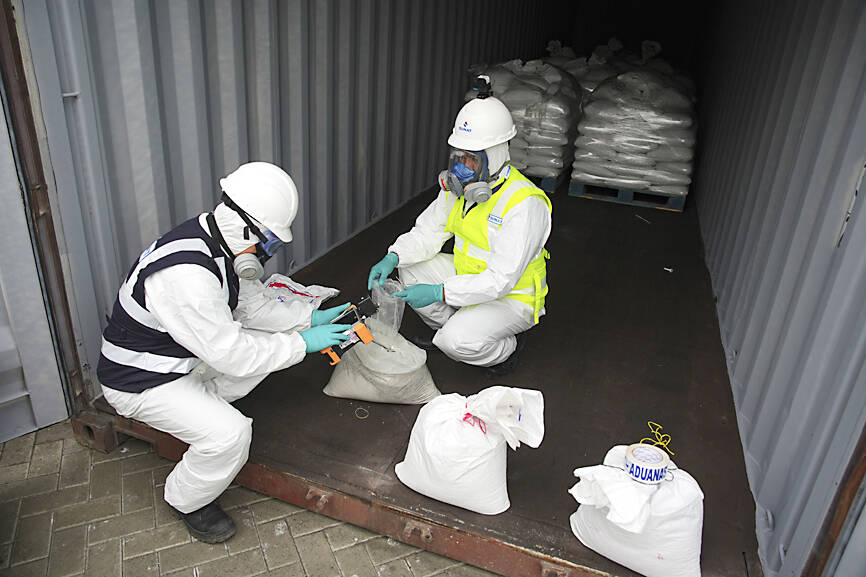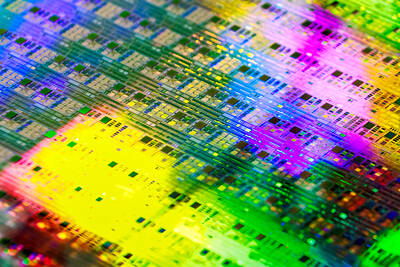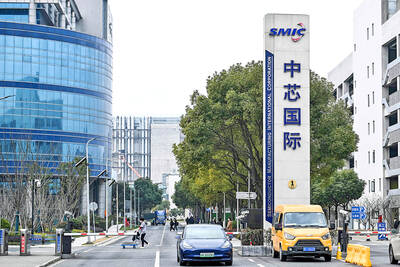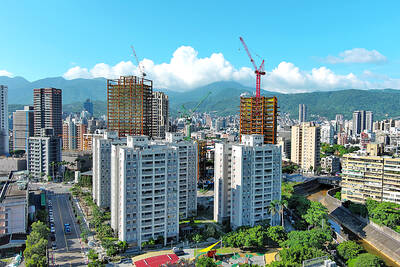The seizure of one of the largest known mercury shipments in history, moving from mines in Mexico to illegal Amazon gold mining zones, exposes the wide use of the toxic metal in the rainforest, according to authorities.
Peru’s customs agency, SUNAT, found 4 tonnes of illegal mercury in Lima’s port district of Callao, according to a report by the non-profit Environmental Investigations Agency (EIA).
“This SUNAT intervention has prevented this chemical from having a serious impact on people’s health and the environment, as can be seen in several areas of the country devastated by the illegal use of mercury and illicit activities,” SUNAT said in a statement.

Photo: AP
The vast transnational smuggling operation trafficked some 200 tonnes of elemental mercury over more than six years, an amount that would have contributed to the production of at least US$8 billion worth of illegal gold, according to the EIA, which worked alongside SUNAT to uncover the network.
“The toxic flow of mercury to the illegal gold mines in the Amazon has been presented and accepted as inevitable for too many years,” EIA US executive director Alexander von Bismarck said.
“It is time to challenge this status quo that affects Amazonian communities and benefits organized criminals,” he said.
The scheme spanned at least four countries — Mexico, the country of origin; Peru, the destination for three-quarters of the mercury; Colombia and Bolivia — between April 2019 and last month.
All four are signatories of the Minamata Convention on Mercury to protect human health by reducing and ultimately eliminating mercury use, and the undeclared shipments were in direct violation of the convention.
Record gold prices have encouraged a flourishing illegal mining trade that damages local nature and biodiversity, and is raising significant health concerns.
With the price of gold surpassing US$3,000 per ounce, mercury — which is used to extract the gold in illegal mines in the Amazon — is worth four times as much.
A highly dangerous neurotoxin, mercury is one of the top 10 chemicals of major public health concern, according to the WHO.
It enters the food chain, bioaccumulates, and causes developmental delays in children, cognitive impairment and multiple other serious health problems for Amazonian communities.
“To extract gold, rivers and streams are polluted, and territories are plundered,” said Julio Cusurichi, an Indigenous leader and Goldman Environmental Prize winner, in Madre de Dios, the Peruvian Amazon region most heavily impacted by illegal gold mining.
“Mercury pollution even affects fish, which is the daily diet of our Indigenous communities. Now the contamination is reaching all of us who live in the Madre de Dios region, Indigenous or not,” he said.
Mercury air pollution in parts of Madre de Dios is more than 5.5 times higher than the WHO’s safety levels.
The investigation uncovered a network involving organized crime groups allegedly centered around a mercury trader identified as Juan Jose Zamorano Davila, based in Queretaro state, Mexico, according to the EIA and Peruvian authorities.
Zamorano allegedly oversaw procurement, concealment, export logistics and financial structuring of the shipments, according to the EIA.
The route begins in Queretaro, where a few active mercury mines, some located within the Sierra Gorda UNESCO Biosphere Reserve that is considered a unique ecosystem of cultural significance, produce dozens of tonnes of mercury each year to feed gold mining demand in the Amazon.
Evidence collected by EIA indicated some of the mines are controlled by the Jalisco New Generation Cartel, one of Mexico most powerful illegal drug networks.
In May, sources from the Queretaro mines told investigators that “mercury fever” has hit the region this year, triggered by record prices of about US$330 per kg offered by mercury traffickers as a consequence of skyrocketing gold prices.
Once smuggled into South America from the Mexican port of Manzanillo, the mercury was moved through ports and companies with alleged ties to organized crime, and resold in illegal gold mining zones, including territories controlled by armed criminal groups like the Clan de Golfo and the Colombian National Liberation Army.
The mercury found in the port of Callao was hidden in sacks of gravel and falsely declared as crushed stone or decorative rocks to bypass customs.
Invoices for the shipments were inflated and misclassified to disguise their contents. Each 20 tonne container was declared at US$11,000 (about 20 times higher than legitimate gravel prices) despite actually containing mercury worth up to US$2 million.
The container intercepted in Peru tested positive for mercury vapor levels 480 times above safety thresholds.
The shipment was marked as destined for Bolivia, passed through Callao and, the investigation showed, was diverted through Peru’s southern city of Arequipa, a distribution hub for destinations such as Madre de Dios.
Similar shipments were traced to Colombia as well as Bolivia, often routed through the US port of Houston, Texas, creating a potential jurisdiction issue in the US.
The routes underscore the global nature of the trafficking operation and also bring attention to limited inspection in transshipment scenarios, the report said.

NO BREAKTHROUGH? More substantial ‘deliverables,’ such as tariff reductions, would likely be saved for a meeting between Trump and Xi later this year, a trade expert said China launched two probes targeting the US semiconductor sector on Saturday ahead of talks between the two nations in Spain this week on trade, national security and the ownership of social media platform TikTok. China’s Ministry of Commerce announced an anti-dumping investigation into certain analog integrated circuits (ICs) imported from the US. The investigation is to target some commodity interface ICs and gate driver ICs, which are commonly made by US companies such as Texas Instruments Inc and ON Semiconductor Corp. The ministry also announced an anti-discrimination probe into US measures against China’s chip sector. US measures such as export curbs and tariffs

The US on Friday penalized two Chinese firms that acquired US chipmaking equipment for China’s top chipmaker, Semiconductor Manufacturing International Corp (SMIC, 中芯國際), including them among 32 entities that were added to the US Department of Commerce’s restricted trade list, a US government posting showed. Twenty-three of the 32 are in China. GMC Semiconductor Technology (Wuxi) Co (吉姆西半導體科技) and Jicun Semiconductor Technology (Shanghai) Co (吉存半導體科技) were placed on the list, formally known as the Entity List, for acquiring equipment for SMIC Northern Integrated Circuit Manufacturing (Beijing) Corp (中芯北方積體電路) and Semiconductor Manufacturing International (Beijing) Corp (中芯北京), the US Federal Register posting said. The

India’s ban of online money-based games could drive addicts to unregulated apps and offshore platforms that pose new financial and social risks, fantasy-sports gaming experts say. Indian Prime Minister Narendra Modi’s government banned real-money online games late last month, citing financial losses and addiction, leading to a shutdown of many apps offering paid fantasy cricket, rummy and poker games. “Many will move to offshore platforms, because of the addictive nature — they will find alternate means to get that dopamine hit,” said Viren Hemrajani, a Mumbai-based fantasy cricket analyst. “It [also] leads to fraud and scams, because everything is now

MORTGAGE WORRIES: About 34% of respondents to a survey said they would approach multiple lenders to pay for a home, while 29.2% said they would ask family for help New housing projects in Taiwan’s six special municipalities, as well as Hsinchu city and county, are projected to total NT$710.65 billion (US$23.61 billion) in the upcoming fall sales season, a record 30 percent decrease from a year earlier, as tighter mortgage rules prompt developers to pull back, property listing platform 591.com (591新建案) said yesterday. The number of projects has also fallen to 312, a more than 20 percent decrease year-on-year, underscoring weakening sentiment and momentum amid lingering policy and financing headwinds. New Taipei City and Taoyuan bucked the downturn in project value, while Taipei, Hsinchu city and county, Taichung, Tainan and Kaohsiung